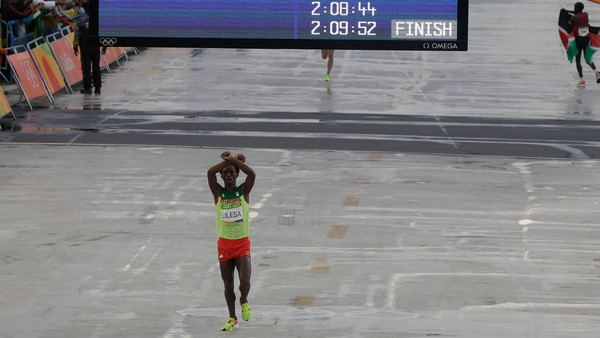The authoritarian development model is running up against limits
As Ethiopian runner
Feyisa Lilesa crossed the finishing line in his silver medal Olympic marathon
run at Rio, he crossed his arms in protest against
his government back home. It was a gesture of defiance that could, for
transgressing Olympic rules, have cost him his medal and will cause him to live
in exile. But it drew global attention to the brutal manner in which the
government in Addis Ababa is handling the greatest challenge to the state since
the end of the civil war in 1991.
Over the past nine
months, hundreds have been killed and thousands incarcerated in a crackdown on
protesters from the Oromo, the country’s largest ethnic group. Feyisa, like
many of Ethiopia’s revered long-distance runners, is Oromo. The unrest among
his people, which has spread to other groups, is symptomatic of a wider
collision as the government seeks to transform a predominantly agrarian society
through industrialisation, commercial farming and urbanisation.
Ethiopia has
spurred some of the fastest economic growth in Africa while eschewing liberal
market orthodoxy and giving the state a central role in development. It is an
experiment keenly watched by other African governments more constrained by
democratic process.
The protests suggest
that this authoritarian development model is running up against its limits.
They were originally sparked by federal government plans to extend
administration of the overcrowded capital Addis Ababa into the surrounding
region of Oromia. Those plans have since been shelved.
But what started as
parochial opposition to corrupt land deals has conflated with broader
grievances about political repression and the perceived dominance in federal
institutions of the Tigray ethnic group. Tigrayans, who spearheaded the overthrow
of the government in 1991, make up about 6 per cent of the population.
In theory Ethiopia has
the wherewithal to deal with such tension. In practice there is a fundamental
contradiction in the way it is governed: between the federal nature of the state
as enshrined in the constitution and the reality of centralised, authoritarian
power. The de facto one-party state may retain sufficient strength to maintain
hegemony for now. But in reverting to such crude tactics to suppress dissent,
the government has raised the risk that what started as peaceful protest will
evolve into armed revolt.
It is a scenario
familiar to many African states. What sets Ethiopia apart
is the effectiveness with which the government has approached development.
Allies in the US and Europe have come to rely on the country’s comparative
stability in a strategically important region threatened by Islamist
extremists. International donors have turned a blind eye to the excesses of the
regime — as they do in Rwanda, which shares a similar profile — and helped
bankroll the state in part because they have received value for their money.
This is short-sighted.
To sustain investment in infrastructure, and accelerate export-led industrial
and agricultural growth, the country will require greater amounts of foreign
capital. That capital will shy away from a further breakdown in law and order.
The government could
start by respecting the spirit of the constitution and ushering in more
decentralised rule. It needs to loosen in parallel its grip on political and
economic freedom if there is to be a chance of providing opportunities for the
100,000 students graduating every year. It will be a delicate process given how
tightly controlled the country has been and how charged the climate is as a
result. But it is a necessary one. Ethiopian exceptionalism has run its course.

No comments:
Post a Comment